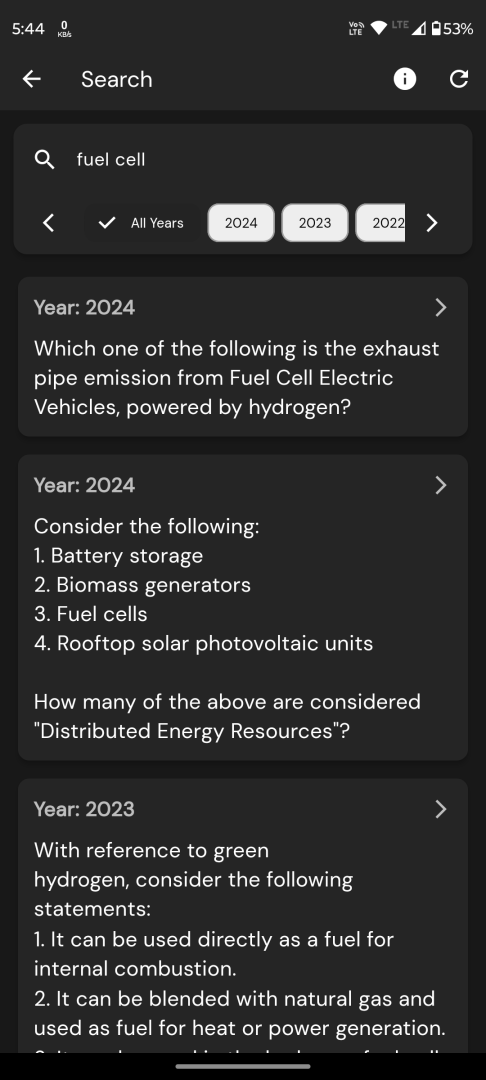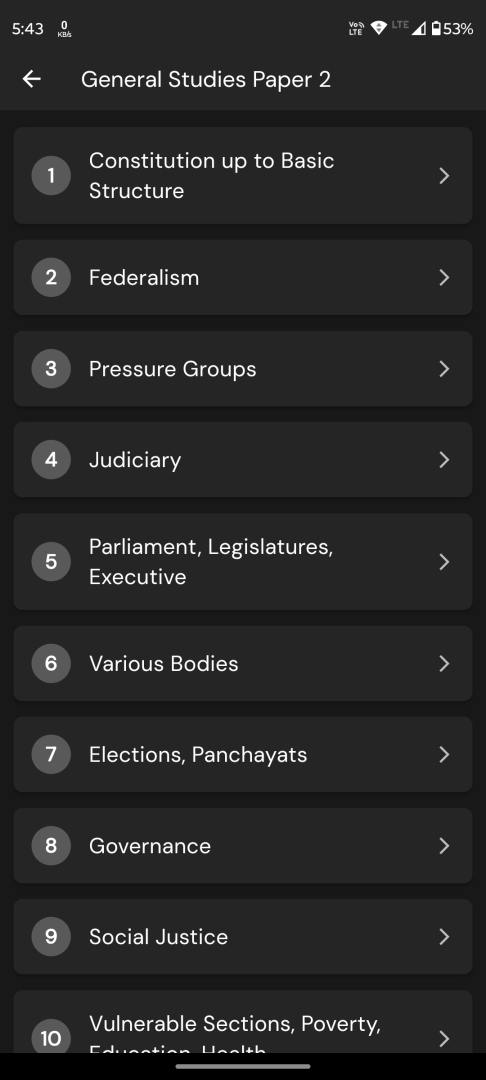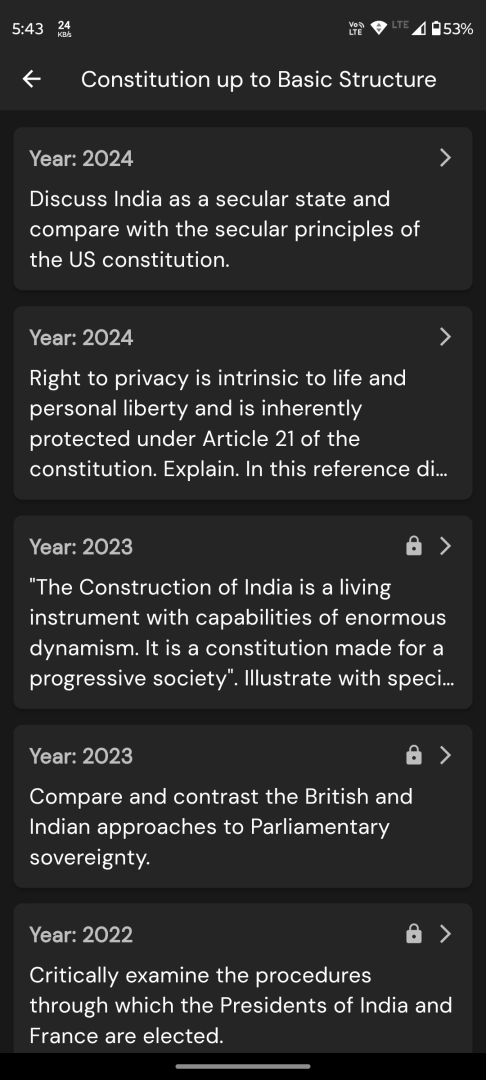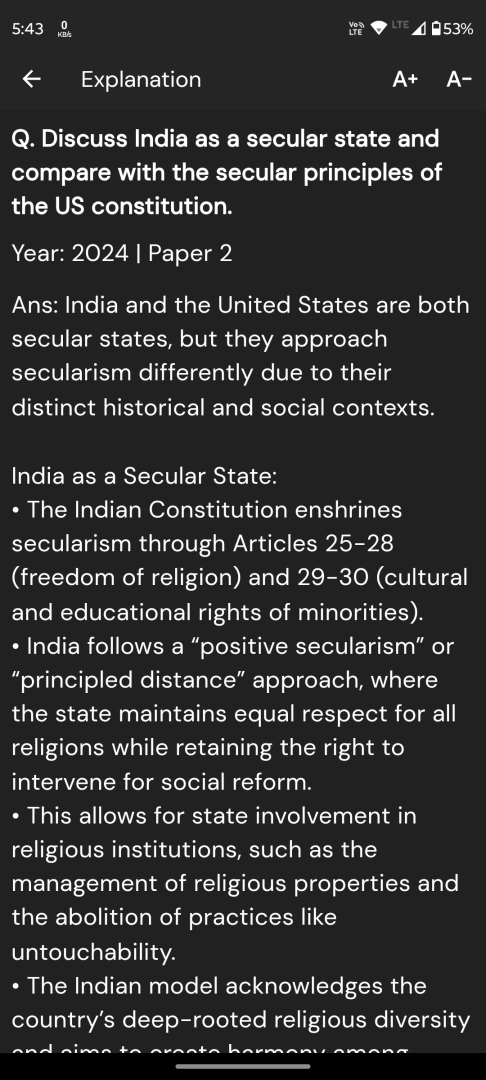Q. Let PQR be a 3-digit number, PPT be a 3-digit number and PS be a 2-digit number, where P, Q, R, S, T are distinct non-zero digits. Further, PQR – PS = PPT. If Q = 3 and T < 6, then what is the number of possible values of (R, S)?
(a) 2
(b) 3
(c) 4
(d) More than 4
UPSC Prelims 2025 CSAT
Explanation :
1. Understand the notation
• PQR is the three‐digit number 100·P + 10·Q + R
• PS is the two‐digit number 10·P + S
• PPT is the three‐digit number 100·P + 10·P + T = 110·P + T
2. Write the given equation
PQR − PS = PPT
⇒ (100P + 10Q + R) − (10P + S) = 110P + T
3. Simplify the equation
100P + 10Q + R − 10P − S = 110P + T
⇒ 90P + 10Q + R − S = 110P + T
⇒ T = (90P + 10Q + R − S) − 110P
⇒ T = 10Q + R − S − 20P
4. Use the given values and constraints
• Q = 3
• T is a digit, distinct, nonzero, and T < 6 ⇒ 1 ≤ T ≤ 5
• P, Q, R, S, T are all distinct nonzero digits (1–9)
Substitute Q = 3:
T = 10·3 + R − S − 20P = 30 + R − S − 20P
5. Find possible P
We need 1 ≤ T ≤ 5, so
1 ≤ 30 + R − S − 20P ≤ 5
• If P ≥ 2, then 20P ≥ 40 ⇒ 30 + R − S − 20P ≤ 30 + 9 − 1 − 40 = −2, which is < 1.
So P cannot be 2 or more.
• Therefore P = 1 is the only possibility.
6. Solve for R, S when P = 1
For P = 1:
T = 30 + R − S − 20 = 10 + R − S
And we need 1 ≤ T ≤ 5, so
1 ≤ 10 + R − S ≤ 5
⇒ −9 ≤ R − S ≤ −5
⇒ R − S ∈ {−9, −8, −7, −6, −5}
But R and S are digits from 1 to 9, distinct from each other and from P=1, Q=3:
Check each possible difference:
• R − S = −9
Only possibility: R=1, S=10 (impossible, S must be ≤9) ⇒ discard
• R − S = −8
Possibility: R=2, S=10 (impossible) ⇒ discard
• R − S = −7
Possibility: R=2, S=9
T = 10 + 2 − 9 = 3
But T = 3 = Q, not allowed (must be distinct) ⇒ discard
• R − S = −6
Possibility: R=2, S=8
T = 10 + 2 − 8 = 4
Digits now are P=1, Q=3, R=2, S=8, T=4 — all distinct, nonzero, T<6 ⇒ OK
• R − S = −5
Possibilities:
– R=2, S=7 ⇒ T = 10 + 2 − 7 = 5 (digits 1,3,2,7,5 all distinct ⇒ OK)
– R=4, S=9 ⇒ T = 10 + 4 − 9 = 5 (digits 1,3,4,9,5 all distinct ⇒ OK)
7. Count the valid (R, S) pairs
We found exactly three valid pairs:
(R,S) = (2,8), (2,7), (4,9)
Therefore, the number of possible values of (R, S) is 3.





